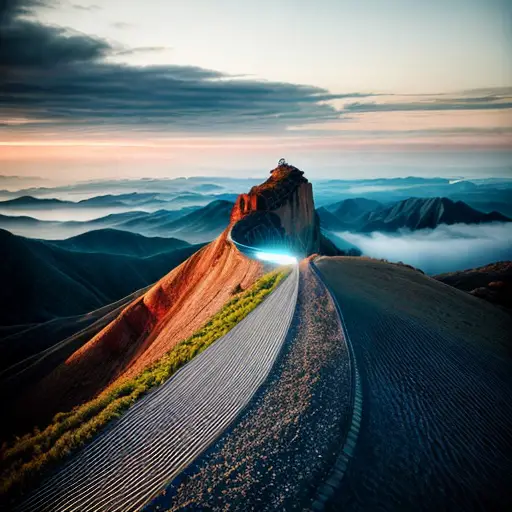Understanding Fill Light in Photography: An Introduction to Illuminating Shadows
Picture this: you're out there, camera in hand, ready to capture the perfect shot. But wait, what's that? Shadows lurking in the corners, threatening to ruin your masterpiece. Fear not, my fellow photographers, for fill light is here to save the day! Fill light, my friends, is like the superhero sidekick of photography. It swoops in, banishing those pesky shadows and illuminating the darkest corners of your frame. Think of it as the Robin to your Batman, the peanut butter to your jelly, the cheese to your macaroni. It's that extra burst of light that brings balance and harmony to your photos, making them shine brighter than a disco ball at Studio 54. So, next time you're faced with those pesky shadows, remember the power of fill light and let it be your guiding light in the world of photography.
An interesting fact about fill light in photography is that it is not always necessary to use artificial lighting equipment to achieve it. Natural light sources, such as the sun or reflective surfaces, can also be utilized as fill light to balance the shadows and highlights in a photograph. This technique, known as 'available light fill,' allows photographers to create stunning images without relying solely on artificial lighting setups.
The importance of fill light in photography cannot be overstated. It's like the secret ingredient that takes your photos from good to jaw-droppingly amazing. Fill light is the magical tool that enhances details and balances exposure, ensuring that every element in your frame shines with clarity and brilliance. It's the gentle touch that brings out the texture in a subject's skin, the sparkle in their eyes, and the intricate details of a landscape. Without fill light, your photos may end up looking flat and lifeless, with shadows swallowing up important details. So, embrace the power of fill light, my fellow photographers, and let it be the guiding force that elevates your images to new heights of visual splendor.

Techniques for Using Fill Light: From Natural to Artificial Sources
When it comes to using fill light in photography, there are a plethora of techniques at your disposal. Whether you're shooting in natural light or utilizing artificial sources, understanding how to effectively use fill light can make a world of difference in your images.
Let's start with natural sources of fill light. The sun, our celestial spotlight, can be a fantastic tool for illuminating shadows. During golden hour, that magical time just after sunrise or before sunset, the sun casts a warm, soft light that can beautifully fill in the darker areas of your composition. Position your subject in a way that allows the sunlight to gently kiss their face, creating a natural glow that adds depth and dimension to your photos.
If natural light isn't readily available or doesn't provide the desired effect, artificial sources of fill light come to the rescue. One popular option is using reflectors. These handy tools bounce light back onto your subject, effectively filling in shadows and reducing contrast. Reflectors come in various sizes and colors, allowing you to experiment with different effects. A silver reflector adds a cool, crisp fill light, while a gold reflector imparts a warm, sun-kissed glow.
Another technique for using artificial fill light is employing a flash or strobe. These portable light sources can be positioned strategically to add a burst of light where needed. By adjusting the flash's power and direction, you can control the intensity and angle of the fill light, ensuring that your subject is perfectly illuminated. Experiment with diffusers or softboxes to soften the light and create a more natural-looking fill.
In conclusion, mastering the techniques for using fill light in photography opens up a world of creative possibilities. Whether harnessing the beauty of natural light or utilizing artificial sources, understanding how to effectively fill in shadows can transform your images from ordinary to extraordinary. So, go forth, my fellow photographers, and embrace the power of fill light to bring your subjects to life and create stunning visual narratives.
A fun fact about fill light in photography is that it can be compared to adding sprinkles on top of a delicious cupcake! Just like sprinkles enhance the overall appearance and appeal of a cupcake, fill light is used to add a touch of brightness and balance to a photograph, making it more visually pleasing. So, next time you're capturing a stunning shot, think of fill light as the 'sprinkles' that bring out the best in your image!
Creative Applications of Fill Light: Adding Depth and Dimension to Your Images
Fill light isn't just a tool for banishing shadows; it's a creative powerhouse that can take your photography to new heights. By strategically placing fill light sources, you can add depth and dimension to your images, transforming them into captivating visual stories. Imagine a portrait where the subject's face is beautifully illuminated, with soft shadows delicately caressing their features. Or picture a landscape where the foreground is bathed in warm fill light, while the background fades into a mysterious darkness. These creative applications of fill light not only enhance the overall aesthetic of your photos but also evoke emotions and draw viewers into your visual narrative. So, embrace the artistic possibilities of fill light and let it be your secret weapon for creating images that truly captivate and inspire.